Unit I
Apostle: A chief disciple of Jesus, see also Missionary.
Gnostic: Ancient religious ideals of both Christian and Jewish sects that rely on Spiritual Knowledge.
Codex Sinaiticus & Vaticanus: Bishop Eusebius’ specialist scriptorium in Caesarea. “An extraordinary expenditure on creating de luxe written texts.” (McCulloch, pg. 191) Each was named after their respective places, yet the codes were similar in understandings of Christianity.
Eucharist: A ceremonious act of eating bread and drinking wine as the body and blood, respectively, of Jesus Christ. The ceremony commemorates the Last Supper.

Basilica: A long oblong hall used in ancient Rome for public assemblies. An “audience hall of a secular ruler, called from its royal associations… conventionally it was a rectangular chamber big enough to hold large numbers.” (McCulloch, 197)
Prosopon: A theatrical mask to showcase the emotional range. In the Bible, it “expresses the aspect of God turned toward the world—his Face.” (Prosopon School of Iconology.com)

Council of Nicea: The first consensus of a church assembly in order to represent all of Christendom. This one, in particular, was responsible for the assumption that Jesus was an embodiment of the Trinity (see Trinity)
Missionary: A person sent on a religious mission, especially one sent to promote Christianity in a foreign country.
Christology: Literally translated from Greek as “the study of Christ.”
Trinity: The accepted ideology that states that Jesus is, in fact, God, the Son, and The Holy Spirit.

Unit II
Charlemagne: Charles the Great became “King of the Romans” in 800 and united the empire under the blanket of Christianity. He implemented many commonplace aspects of society, including Carolingian minuscule. (McCulloch, 355)
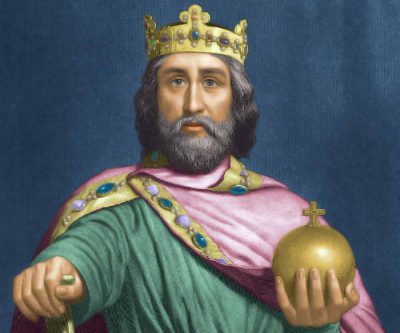
Donation of Constantine: A fake document that provided the absolute rule of Rome to the popes. “One of the most significant forgeries in history… The forged Donation much fired the imagination of later popes and clerical supporters of their power.” (McCulloch, 351)
Asceticism: A severe form of self-discipline that includes shutting oneself off from society including its indecent formalities and the institutionalization of Christianity.
Virgin Mary: The human bearer and mother of Jesus Christ and a largely significant agent in Christian theology


© The National Gallery, London
Original Sin: (Also known as the ancestral sin) Related to Adam and Eve’s actions in the Garden of Eden. The ideological concept implies an inherited folly of all humans in a collective sin.
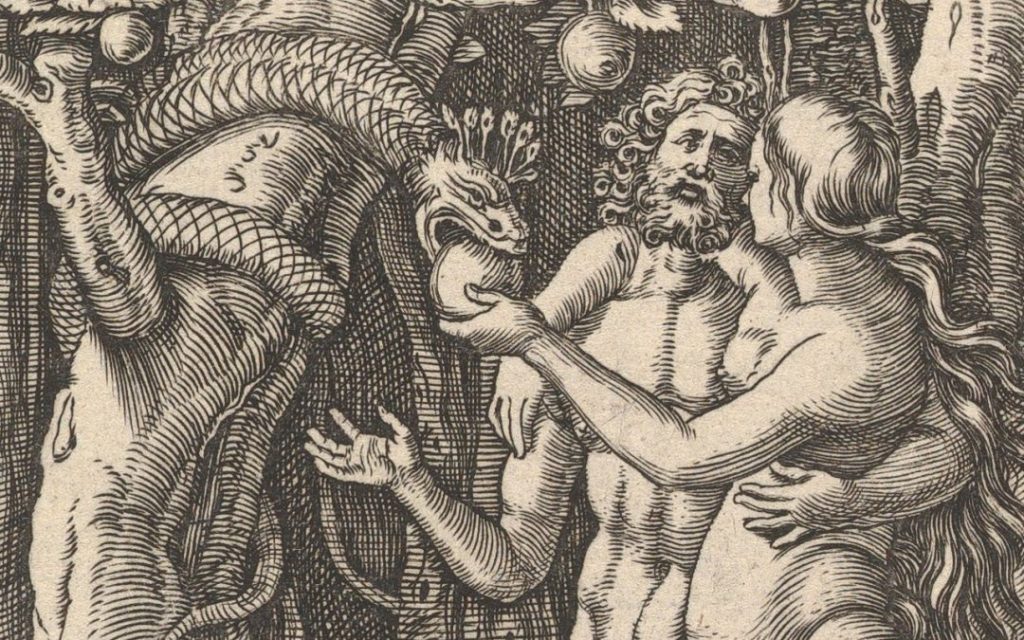
Pilgrimage: A journey to an unknown or foreign land in order to find out the nature of others as well as oneself.
Aristotle: Greek philosopher whose logical ideals influenced the philosophy of Christianity during the Middle Ages.
Annunciation: The announcement made by Archangel Gabriel to Mary revealing to her that she, as a virgin, will bear a savior child by the Holy Spirit. (McCulloch, 80)

Schism: The formal split of a church into factions of the church; often referenced as the split of Eastern Orthodox and Western Catholic ideologies.
Constantinople: Named in honor of Constantine, the city was the capital of the Roman Empire and subsequently the Byzantine Empire until it fell to the Ottoman Empire in 1453. Today, under the Turkish government, it is known as Istanbul.

Unit III
Iconoclasm: The “smashing” or general destruction of religious icons in accordance with the Second Commandment that prohibited false idolatry. Around the 8th century, Pope Leo III encouraged this practice. (McCulloch, 443)

Great Papal Schism: A significant event in 1378 that “ruined any credibility” for the Papacy in which three men all claimed to be Pope at the same time. (McCulloch, 491)
St. Catherine’s Monastery: Located on Mount Sinai, the Eastern Orthodox monastery was built during Justinian’s era and is one of the oldest operating monasteries in the world.
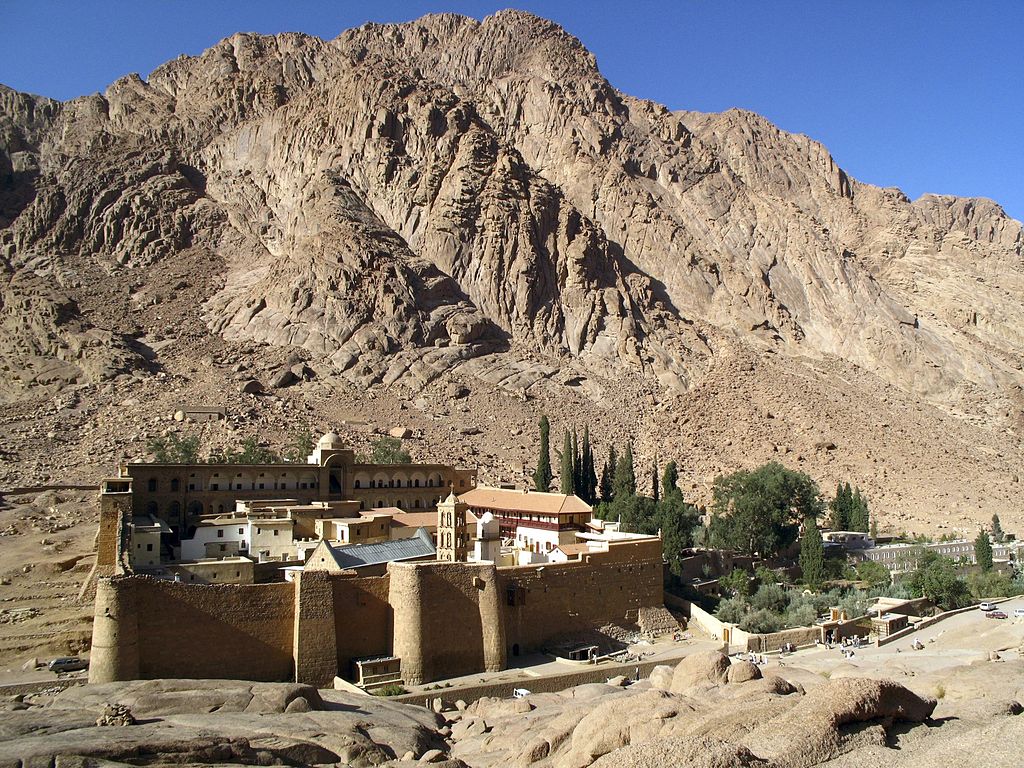
Genghis Khan: Born Temujin, “Ruler of the Ocean” is the most infamous Mongol. His reign allowed for Mongolia to destroy and then control a massive span of the world, “from the Mediterranean to the China Sea.” (McCulloch, 271) He often had alliances with many religions, including Dyophysite Christianity.
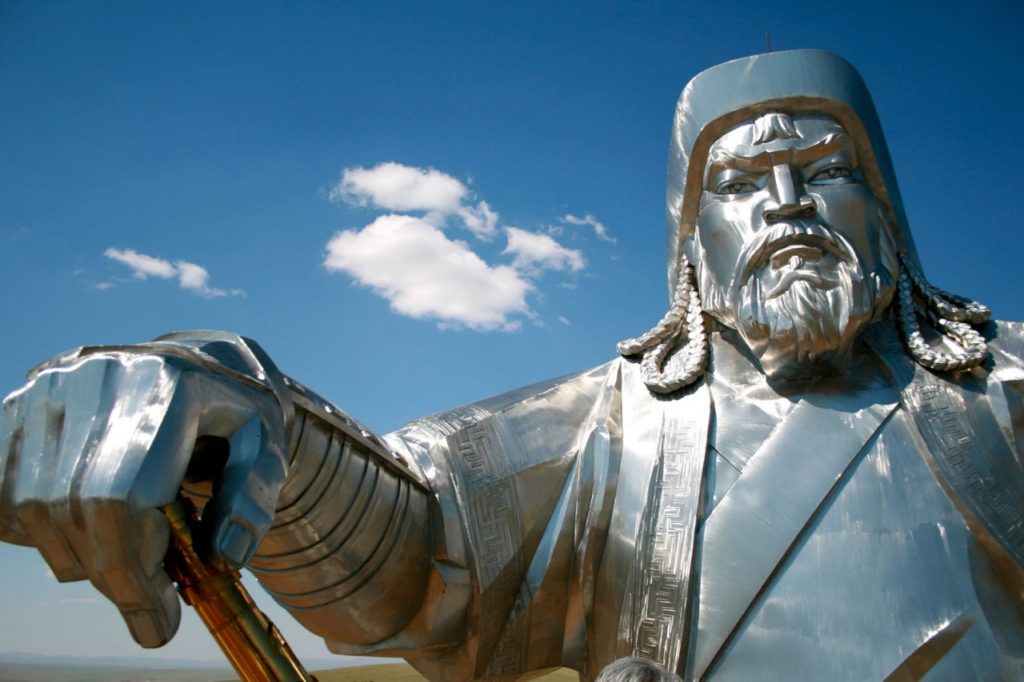
Deification: A person being regarded and treated like a God.
Charles Martel: Bastard son of Pepin of Herstal, Frankish statesman and Mayor of the Palace. He is often regarded as the savior of Western Christianity as he successfully pushed back the Islamic advancement into Europe at the Battle of Poitiers (Tours) in 732. (McCulloch, 346) I recall a Medieval professor once noting that “if not for him, we’d probably be studying the Quran at Oxford.”

The Crusades: A series of religious wars (four crusades in total from 1094 to 1271) fought along the Mediterranean in order to have control over the Holy Land of Jerusalem. The excruciating and violent campaigns pitted Western Christianity and Judaism against the Islamic world.

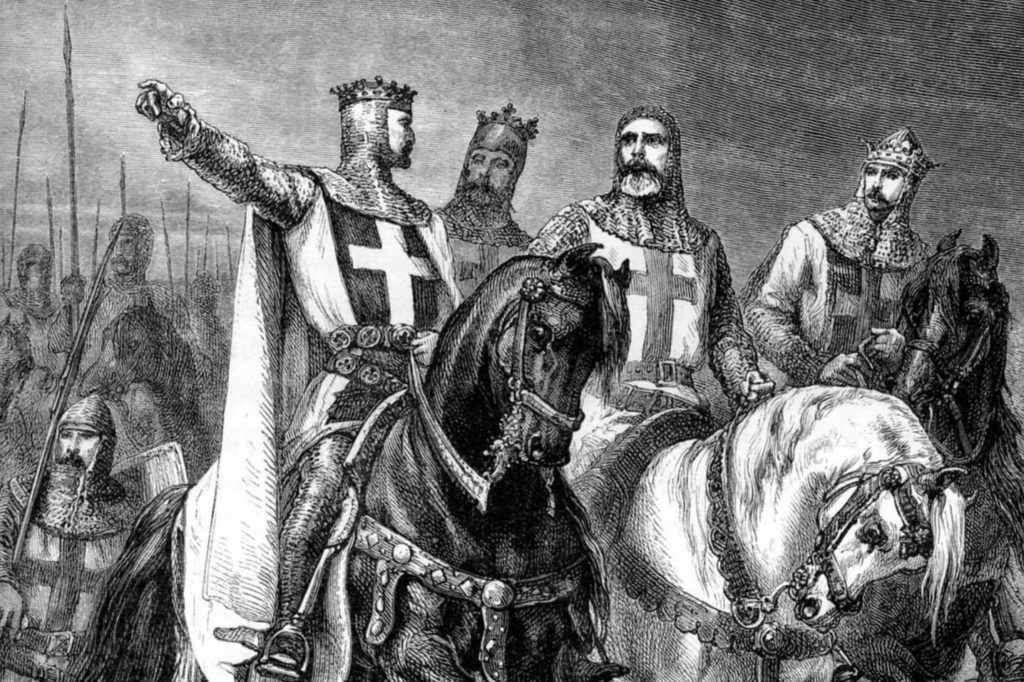
Christendom: An Anglo-Saxon term coined by Spanish scribe Paulus Orosius. The simple name encapsulates the “universality of a continent-wide culture focused on Jesus Christ.” (McCulloch, 503)
Pact of Umar: Refers to the second Caliph Umar and was essentially his “way of dealing with non-Muslims” living within an Islamic state. (also known as People of the Book: Christians and Jews) [ quote from Internet Medieval Source Book.] See Dhimmi
Dhimmi: According to the pact, they were the “protected” (albeit second-class) peoples who paid a special tax in exchange for their safety under Islamic law.
Unit IV
Martin Luther: A former monk, the German theologian became the primary catalyst for the Protestant Reformation. He became well known (and ruffled some Catholic feathers) when he published “a set of propositions for the purpose of conducting an academic debate on indulgences.” (Hillerbrand)
Purgatory: An intermediate state of the soul directly after one’s death. The doctrine relates to “easing the passage of souls” and also allowed for prayers to work both ways in a “splendidly mutual system” between the living and the dead. (McCulloch, 555) However, many Christians have since denied its existence (especially Protestants.)

Renaissance: Despite its connotations with anti-Christianity, the 14th-15th century’s revival of interest in art and literature was often a unique way for talented people to “apply their enthusiasm to the exploration and proclamation of their faith.” (McCulloch, 574) Typically, it is associated with a rediscovering of various forms of beauty from ancient cultures and late antiquity.

Humanism: A difficult definition to express in simple terms but scholars typically associate it with literature and art that are focused on humanity as opposed to divinity or religious aspects.
Excommunication: A penal reaction to heretics and other Christian deviants. It is defined as “cutting off offenders from fellowship with the Christians in a particular place.” (McCulloch, 136)
Confessionalization: A label attributed to “creating fixed identities and systems of belief for separate Churches which had previously been more fluid in their self-understanding, and which had not even sought separate identities for themselves.” (McCulloch, 639)
King James Bible: Also known as the Authorized Version, is the English translation of the Bible for the Church of England. Commissioned in 1604 and completed in 1611 under the sponsorship of King James (VI and I.)


Anabaptist: Ana is translated from Greek as “again.” The Protestant Reformation allowed this practice of adult baptism to flourish in order to “give a new and genuine” baptism to believers. (McCulloch, 622)
Transubstantiation: “A scholastic term that attempts to explain how bread and wine can become the body and blood of the Lord without losing their exterior appearance.” (Christiansen) Became an authoritative aspect of Catholic ideology at the Council of Trent.
Scholasticism: A Medieval system of Christian theology, inspired by Aristotle’s writings, that encouraged the “building up [of] knowledge through discussion.” It is often associated with university schools and was prominent in Europe from 1100 to about 1700. (McCulloch, 399)
Puritans: While considered a derogatory term for those disloyal to the Church of England, they were Reformed Protestants who sought to purify England of Catholicism once and for all. Despite the negative connotations, most wore the title as a “badge of pride. “(McCulloch, 649) Eventually, some of these pious individuals would sail to the New World in order to create a TRUE city on the hill.

Unit V
Ignatius Loyola: Now venerated as Saint Ignatius of Loyola, he was a Spanish Baroque Catholic man who founded the Society of Jesus (Jesuits.) After writing Spiritual Exercises, he fled from the “unfavorable interest” of the Inquisition and began a significant agent in the history of Christianity. (McCulloch, 661)

Society of Jesus: A religious order, known as the Jesuits, within the Catholic canon that was papally approved by Pope Paul III in 1540 during the Counter-Reformation. Emphasis on obedience to the Popes was a driving factor in their success. They were a different bread of Catholicism as they had no regular dress codes or routine gatherings.
Spiritual Exercises: Known as “one of the most influential books in Western Christianity,” it was a collection of prayers and meditations that were intended to create a simpler and more comforting form of religious contemplations. (McCulloch, 661)
Counter-Reformation: In response to the Protestant Reformation’s success, the Catholic Church solidified their doctrines in observance of the Pope and of venerated Saints.
Council of Trent: A prominent aspect of the Counter-Reformation that decidedly set the tone for the “uniformity of worship, doctrinal instruction and clergy training and discipline.” (McCulloch, 675-6)

John Locke: An English philosopher often attributed to Two Treatises. In addition, his liberal reflections were greatly influential in the United States of America’s Declaration of Independence. (McCulloch, 728)

Quakers: Formally known as the Religious Society of Friends, the denomination of Christianity began in 17th century England and found its way to the New World. (McCulloch, 488) The religious order personified the inner light of their savior Jesus and expressed puritan values in areas of North America like Pennsylvania and Delaware.
William Penn: Writer and significant member of the Quakers. Through royal connections, he obtained a small piece of land in North America and declared it Pennsylvania. The main theme of his religious foundation was one of friendship and tolerance.
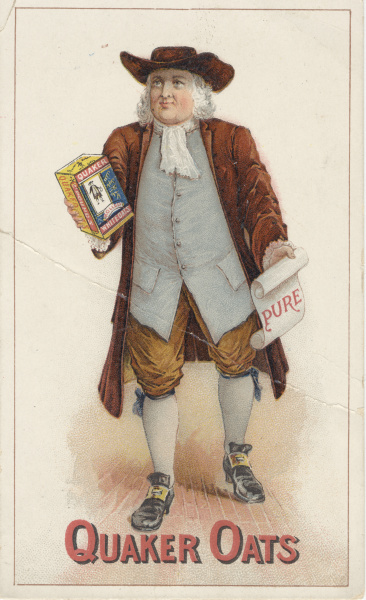
Indigenization: Efforts to sync with local natives in order to sell the idea of Christianity by electing indigenous leaders as clergy members. (McCulloch, 709)
Pietism: A religious movement within Lutheran beliefs that emphasized biblical devotion, conservatization, and virtuous living.

